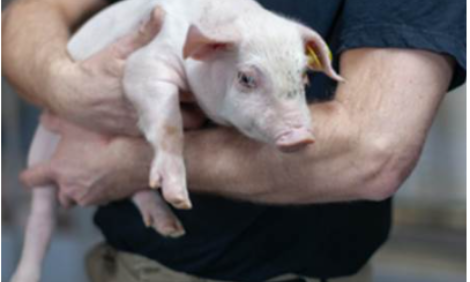



Development of Novel Real-Time PCR Assay for Detection of Porcine Boca-Like Virus
Chinese researchers have developed a sensitive and specific assay for the porcine boca-like virus (Pbo-likeV), which is thought to be associated with a number of pig diseases.The recently discovered porcine boca-like virus (Pbo-likeV) is a member of the Parvoviridae family, genus Bocavirus, and it is potentially associated with swine disease, according to Bin Li of Jiangsu Academy of Agricultural Sciences and co-authors there, at the Ministry of Agriculture and Huazhong Agricultural University. Their paper is published in Virology Journal.
In 2009, a novel Pbo-likeV was discovered in Swedish pigs with postweaning multisystemic wasting syndrome (PMWS) using random amplification and large-scale sequencing technology, according to the researchers. Subsequent studies indicated a high prevalence of this novel Pbo-likeV was in weaning piglets with respiratory tract symptoms, and it has also been detected in apparently healthy pigs in China.
The researchers continue that although studies have associated Pbo-likeV with PMWS, the full spectrum of clinical disease and the epidemiology of Pbo-likeV infection remain unclear.
The availability of rapid and reliable molecular diagnostics would aid future studies of this novel virus. Thus, the researchers developed a sensitive and specific TaqMan-based real-time PCR assay to target the Pbo-likeV NP1 gene.
The assay reproducibly detected 20 copies of a recombinant DNA plasmid containing the NP1 gene, with a dynamic range of six orders of magnitude (102 to 107 copies). The assay did not cross-react with other animal viruses.
Clinical evaluation found that Pbo-likeV was present in Chinese swine herds at a frequency of 44.2 per cent (114/258). Higher infection rates were found in diseased pigs (56.1 per cent, 101/180) compared with healthy pigs (16.7 per cent, 13/78; P<0.05).
Li and co-authors conclude that their assay for the diagnosis and quantification of Pbo-likeV was highly sensitive and specific, and should provide a reliable real-time tool for epidemiological and pathogenetic study of Pbo-likeV infection.
Reference
Li B., S. Xiao, J. Ma, Y. Liu, L. Mao, L. Wen, A. Mao, X. Zhang, Y. Ni, R. Guo, J. Zhou, Z. Yu, L. Lv, X. Wang, L. Fang, H. Chen and K. He. 2011. Virology Journal, 8:357 doi:10.1186/1743-422X-8-357
Further Reading
| - | You can view the full report by clicking here. |
Further Reading
| |
- | Find out more information on PMWS by clicking here. |
August 2011








